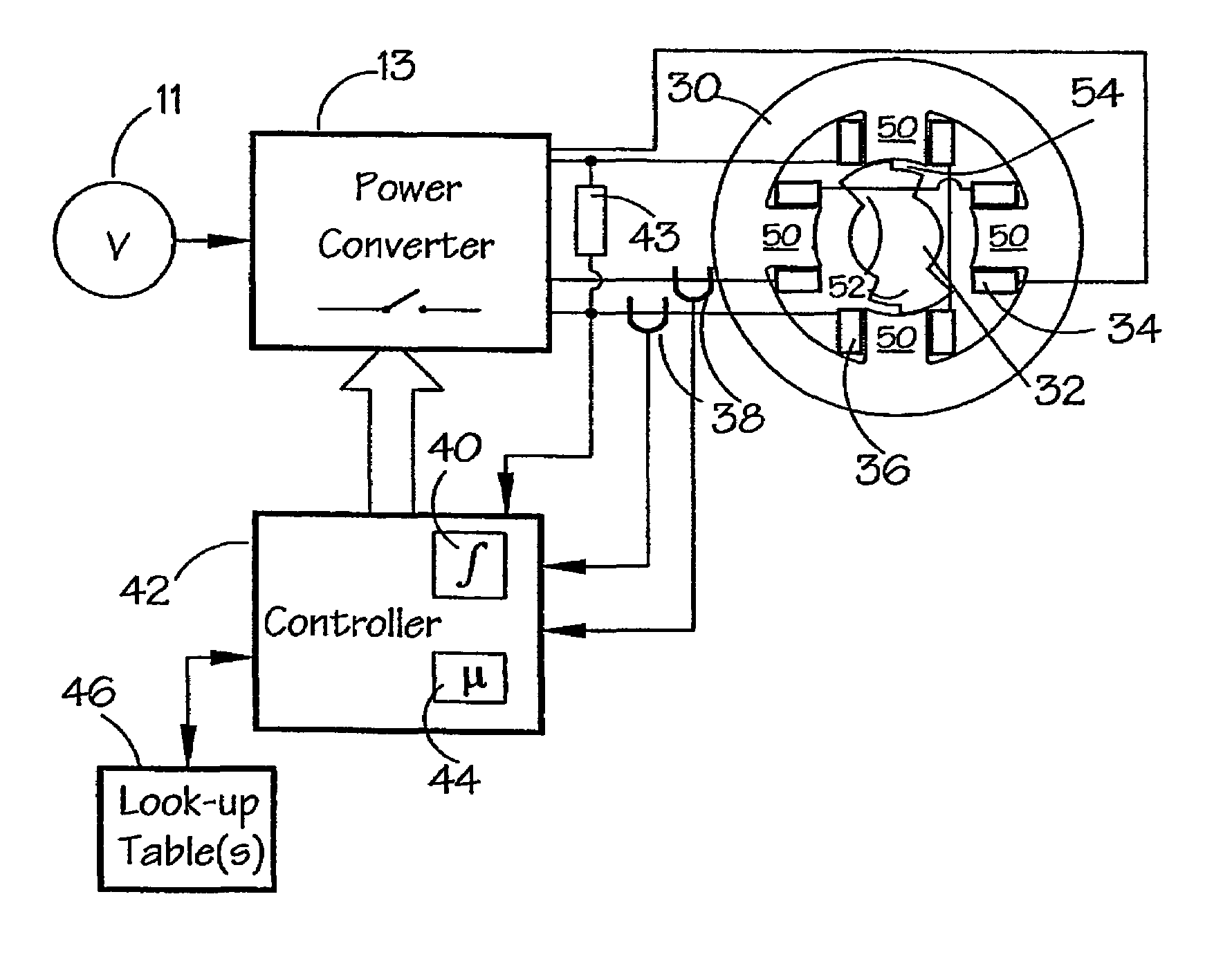Rotor position detection of a switched reluctance drive
a technology of switched reluctance and rotor position detection, which is applied in the direction of coils, synchronous motor starters, ac motor stoppers, etc., can solve the problems of increased assembly cost, potential source of unreliability, and extra electrical connections to the machine, so as to achieve robust and cost-effective
- Summary
- Abstract
- Description
- Claims
- Application Information
AI Technical Summary
Benefits of technology
Problems solved by technology
Method used
Image
Examples
Embodiment Construction
[0035]The phase inductance cycle of a switched reluctance machine is the period of the variation of inductance for the, or each, phase, for example between maxima when the stator poles and the relevant respective rotor poles are fully aligned. The illustrative embodiment to be described uses a 2-phase switched reluctance drive in the motoring mode, but any phase number from one upwards could be used, with the drive in either motoring or generating mode.
[0036]FIG. 5 shows a system for implementing a method according to an embodiment of the invention. FIG. 6 illustrates graphically a continuous current waveform for the system of FIG. 5. In this system, a power converter 13 is typically the same as that shown in FIG. 1, and like reference numerals have been used where appropriate. The converter 13 controls the switched reluctance machine, as before. The converter 13 is itself controlled by a controller 42 which, in this embodiment, is based on a digital signal processor, e.g. one from ...
PUM
 Login to View More
Login to View More Abstract
Description
Claims
Application Information
 Login to View More
Login to View More - R&D
- Intellectual Property
- Life Sciences
- Materials
- Tech Scout
- Unparalleled Data Quality
- Higher Quality Content
- 60% Fewer Hallucinations
Browse by: Latest US Patents, China's latest patents, Technical Efficacy Thesaurus, Application Domain, Technology Topic, Popular Technical Reports.
© 2025 PatSnap. All rights reserved.Legal|Privacy policy|Modern Slavery Act Transparency Statement|Sitemap|About US| Contact US: help@patsnap.com



